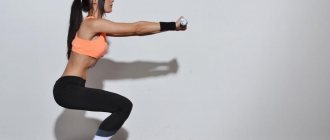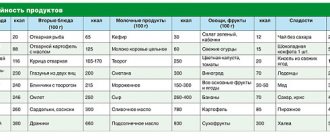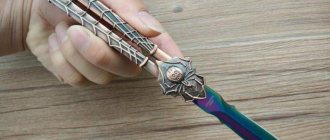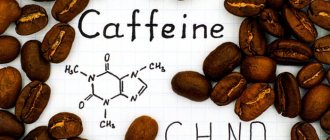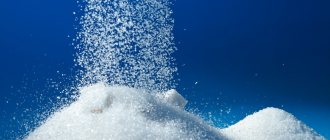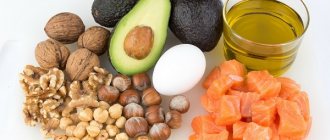In the last few years, the cult of the body has been rapidly developing in the CIS countries. If ten years ago the usual way of spending time for young people was to sit at the entrance with a beer and a cigarette in hand, now young boys and girls spend more time in the gym. Of course, not everyone still leads a fully healthy lifestyle, but the popularity of sports is clearly growing and growing very quickly.
Among the huge number of gym visitors, one cannot help but highlight bodybuilders - people for whom sport is both a way of life and a source of income. IQReview figured out exactly how athletes earn money, what their income level is, and what it generally takes to become a professional bodybuilder.
About bodybuilding and its difference from other types of “iron” sports
Before dealing with income, it is worth delving into the terminology separately. For the average person who has never visited the gym, a bodybuilder is any person with an athletic build and large muscle mass. However, even an amateur can gain weight up to 100 kilograms and “shape” it well.
In fact, bodybuilding (or bodybuilding) is a professional sport in which the athlete's task is to build and build ideal-looking muscles. Bodybuilding competitions of various sizes are regularly held - from city to world. This sport is usually played by men, but there is a small percentage of women (naturally, separate competitions are held for them).
Let's give a simple example. Has everyone seen Arnold Schwarzenegger? This is a professional level bodybuilder. This sport is characterized by large muscle mass and large dimensions.
Now - about “related” sports:
- Powerlifting. If in bodybuilding the athlete’s goal is the beauty and aesthetics of the muscles, then in the PL the main task is to lift maximum weight in 3 basic exercises: squats with a barbell, deadlift and bench press. At the same time, a powerlifter can look whatever he wants - be overweight, have “bad” proportions, have unprominent muscle groups: in this sport this is not important.
- Weightlifting. An Olympic sport related to powerlifting. The athlete’s goal is to lift the maximum weight, only in other exercises: the snatch and the clean and jerk.
- Crossfit. The “young” direction, which is a combination of weightlifting, powerlifting, includes elements of gymnastics and athletics. Exercises in this sport are usually performed in a circle, one after another, without breaks. As a result, athletes usually look “lean”, with good muscle mass, but body beauty is not the goal in this sport.
About various categories and related areas
Bodybuilding in the last few years has begun to be divided into separate categories and areas. If previously only athletes with huge muscle mass could take part in competitions, now “lightweight” categories have appeared:
- Men's Physique and Women's Physique (“beach” bodybuilding). The category of “lightweight” bodybuilding is very popular in the Russian Federation. It does not require huge muscle mass from athletes (for example, for an athlete 180 cm tall, the maximum weight is 84 kg). In addition, according to the rules, participants must perform in shorts - that is, the thigh muscles are covered, and they do not need to be worked out at all. In this direction, important nuances are proportions, physique symmetry, relief (but the requirements for relief are much lower than in classical bodybuilding).
- Fitness bikini. A popular women's trend in which pronounced muscle relief is not needed. On the contrary, in a fitness bikini the ideal is a fit and slender female figure with “lightly” defined muscles, without excessive mass. In fact, any girl can achieve such results, even without pharmacological support. Quite often, applicants who started playing sports only six months or a year ago perform in fitness bikinis.
There are several other categories in women's bodybuilding; we will not consider them separately.
Material on the topic: How to look for your first job?
In Russia
In Russia, the income of fighters cannot be compared with that in the United States. A beginner athlete in a major promotion (ACB, M-1, Fight Nights) can earn $1-3 thousand. A more or less famous fighter with a rating with victories can receive up to $5 thousand.
Fees over $10 thousand are already rare for Russian tournaments: you can earn that much for winning a major tournament, or if you are a very famous fighter and fight against equally famous ones.
For example:
- Alexey Oleinik received $30 thousand in 2013 for his fight against Jeff Monson;
- Alexander Emelianenko received $50 thousand (according to unofficial data) in 2013 for the main fight of the ProFC tournament against Jose Gehlke;
- Alexander Shlemenko received $50 thousand in 2020 for winning the M-1 Grand Prix final (this was the main prize - he also received fees for each fight separately);
- Ramazan Emeev received $10 thousand per fight (+$10 for a victory), being the M-1 champion;
- Jeff Monson received from $15 to $45 thousand for fights in the Russian Federation in the period 2011-2016;
- Nikita Krylov received $50 thousand each in 2017-2018, performing in M-1 and being a champion, and before that he competed in the UFC for 4 years.
If we talk about fighters from the middle of the ranking, despite the difference in income, in Russia it is still easier for such fighters to compete than in America - our expenses are several times lower, and taxation is familiar and not so complicated.
How long does it take to become a bodybuilder?
If a person who has never picked up a barbell in his life begins to actively train, it will take about six months for the first more or less noticeable results. During this period, you can gain weight, and an increase in muscle mass will be visually visible.
Professional bodybuilding is a completely different matter. From scratch to competitive form you will have to work for 3-4 years. If your goal is to perform not in the “classics”, but in the light version of Men’s Physique, then you can do it in one and a half to two years, under favorable conditions.
What is needed for rapid progress, and what determines the effectiveness of training?
Becoming a professional bodybuilder is not an easy task. First of all, the difficulty of this matter lies in the regularity of training. Even the most physically gifted athlete will not be able to achieve good results if he does not train consistently, without breaks.
In addition to the stability of classes, the following factors play an important role:
- Body type (somatotype). Conventionally, the human body can be divided into 3 types (ectomorph, mesomorph, endomorph). They differ from each other in proportions, tendency to deposit fat and tendency to gain muscle mass. If you are an ectomorph (thin build, usually tall, low fat percentage, thin-boned skeleton), then it will be more difficult for you to break into classical bodybuilding. But it’s the easiest way to build an aesthetically pleasing athletic figure and compete at Men’s Physique. Endomorphs have no problems with gaining weight, but they may have difficulties with “cutting”: they lose excess weight reluctantly and difficultly. For mesomorphs - the golden mean - it is easiest to achieve large and at the same time “dry” mass.
- Genetics. In this case, we are talking about the shape of the muscles, their attachment, and the amount of subcutaneous fat.
- A properly designed training program. There are a lot of exercises for building muscle mass, and finding the perfect combination for your body is not an easy task. The difficulty here is that there is no universal program that is suitable for everyone. It must be compiled individually, usually only through trial and error.
- A properly designed nutrition program. If you press 120 kilograms, but eat without control and restrictions, you will not achieve ideal relief. Diet is half the success of any bodybuilder. Therefore, you need to learn not only the technique of performing exercises, but also the rules of nutrition.
- Correct intake of sports nutrition and various supplements (vitamins, minerals). Filling the body's need for calories, proteins and vitamins naturally (from regular food) is both difficult and expensive. Therefore, various supplements come to the aid of athletes. We are not talking about steroids, but about protein, creatine, gainer, amino acids, and vitamin complexes. An athlete should also know about such supplements - it will be difficult to do without their use.
- Control and measurements. To see the exact progress (or lack thereof), it is recommended to constantly record all the results of your workouts. In a notebook, in a special application on your smartphone, in a table on your computer - it doesn’t matter, but make it a habit to record your training day. What did you do, with what weight, how many repetitions in how many approaches. It is recommended to periodically record your measurements: weight, biceps, hips, chest, waist.
About pharmacological support (steroids)
Separately, it is worth mentioning the use of anabolic steroids. Whatever professional bodybuilders say about their naturalness in terms of “chemistry” is not true. If an athlete weighing 100-120 kilograms stands in front of you, with six-pack abs, prominent veins, and a “dry” appearance, you can firmly say that he is familiar with steroid drugs from his own experience.
Healthy eating
Sooner or later, any athlete comes to take “chemistry”: progress eventually hits a natural ceiling, when training without pharmaceutical support no longer gives an effect, or does, but very slowly. And then the athlete has a choice:
- accept current form and slow progress;
- look for opportunities to improve your workouts in a natural way (exercise more, more often, try experimenting with exercises, eat more, sleep more);
- start taking steroids.
Naturally, if an athlete’s goal is competition, then he almost always chooses the third option.
This solution is relevant for those who already have extensive training experience. If you are a beginner whose biceps girth has just reached 35 centimeters and who bench presses 50 kilograms, it is too early to think about steroids. Of course, they will have an effect, but it will be short-lived. After completing the course, there is a high chance that most of the weight gained will be gone, even if you continue to exercise.
How do bodybuilders make money?
Most people don’t understand why these huge guys go to the gym, spend money on preparation, torture themselves, constantly train and perform. How do they earn money if they don't go to work? How do these “loafers” live?
In fact, this is their job. They are far from slackers, they are constantly in sight and earn a lot of money. Everyone does it differently, but it all works. We present to your attention the most common ways to make money among bodybuilders.
Contracts with brands
One of the ways athletes make money. After winning a certain tournament, interest in a particular athlete arises. After which he is offered to sign a contract with the sports nutrition brand that he will represent. The athlete wears things from this brand, uses their products completely free of charge, but mentions it in his videos.
Example
A good example is our bodybuilder Alexander Fedorov, who has a contract with PureProtein. The athlete receives an unlimited number of products, financial assistance for his cooperation and brand advertising.
Own sports nutrition
More popular athletes create their own line of sports nutrition. They don't have to sign contracts with other brands; they sell their own products.
Example
Take Ronnie Coleman, for example, he created his own line of sports nutrition, which is extremely popular. Thanks to the name Ronnie, his products are sold out in America.
Clothing line
Men's Physique athletes mainly create their own clothing line. Since these athletes are more associated with fitness models, clothing advertising is much closer to them than sports nutrition.
Example
Anton Antipov is successfully promoting his clothing brand. He is very popular among fans, and there are many of them. The clothes have a sporty style and make the wearer stand out from the crowd.
Among foreign brands, we can highlight clothes from CT Fletcher, which are very popular in America due to the promotion of the video with “Plush Beard”.
Working as a model
This type of income is popular among some Men's Physique athletes. Thanks to their aesthetic body shape, athletes receive offers from brands to advertise clothing lines. There are separate federations like the WBFF, which prepare athletes specifically for further appearances on the podium.
Example
Fitness model – Sergey Mironov. Due to his physique, this young guy is very popular in clothing advertisements.
Coaching activities
Basically, athletes engage in coaching at the end of their career, but there are also fanatics who do it in parallel with their career. Being a coach is prestigious and makes you an idol among other people.
Example
The most striking example from abroad is George Farah, who, after finishing his career as an athlete, immediately turned to coaching. You can read more about it in our article.
It is worth mentioning our Dmitry Yashankin, who has become very interested in training Men's Physique athletes lately. A striking example of his ward is Denis Gusev, who achieved very good results.
Training and nutrition programs
This type of activity is carried out by smaller cones. Usually these are athletes who do not reach the World level. The main activity is creating personal training and nutrition programs for people.
Example
The first one who comes to mind is Yuri Spasokukotsky, who loves to sell his methods. However, it has very good profits and great popularity. And the people he works with really achieve considerable success.
Blogging on YouTube
Some athletes maintain their own video blog, in which they share bodybuilding tips and secrets with viewers. This is a good type of income, does not require expenses and gives the athlete considerable popularity. Now this method is one of the most popular. Earnings come from advertising.
Example
Stanislav Lindover is one of the most popular video bloggers on the Yougifted channel. Despite the fact that he is a famous athlete who has won serious tournaments, now many fans listen to his advice and his channel is gaining a lot of views.
Well, how can one not remember everyone’s favorite Vadim Ivanov and his Do4a channel. This is one of the most popular sports portals dedicated to fitness and bodybuilding.
Sale of author's books
Some athletes don’t just write training and nutrition methods, they completely restructure bodybuilding in their own way and present it to people. This is done with the help of original books that help beginners and others improve their results. Such books are extremely popular and bring considerable income to their authors.
Example
Let's remember Denis Borisov, who really loves to sell his books, and he has a lot of them. In addition, he created an entire pyramid system, which led to a good income.
Another representative is Mike Rashid, whose e-books have gained great popularity. The basis was overtraining, which few people recommend or use. It was Mike Rashid who used them in his program.
Fitness stars
About costs: how much money do professionals have to spend and on what?
Bodybuilding is a very expensive sport: if you lack finances , it will be difficult to achieve serious results. Now we will talk only about professionals - performing athletes.
In addition to the usual costs (clothing, housing, utilities, etc.), a professional bodybuilder has to spend money on the following things:
- Gym membership. The average price for a good club is about 14-20 thousand rubles per year (or, if broken down by months, about 1200-1700 rubles).
- Sports nutrition. Let's take the average minimum level for 1 month: 1.5 kilograms of good protein, 150 grams of creatine, vitamin-mineral complex, fish oil. The approximate cost of such a set is about 3,500 rubles.
- Proper nutrition. It all depends on the athlete’s diet, his goals (weight gain or “cutting”), his current weight and the desired speed of obtaining results. Since costs for athletes will always be individual, we will give the average amount for an athlete weighing approximately 85-90 kilograms: about 3000-4000 rubles per week (or 12-16 thousand per month). to save significantly on nutrition: a lack of calories or poor quality food simply will not allow muscle mass to grow normally.
- A course of steroid drugs. Such products are quite expensive (of course, if we are not talking about a solo course of methane, but about “cleaner” drugs). On average, a course of 2-3 substances for 4-5 weeks + drugs for post-cycle therapy (to neutralize side effects and to stabilize the natural hormonal balance in the body) will cost at least 4000-5000 rubles. However, such expenses are not needed every month - on average, athletes take 1-2 courses per year.
- Analyzes before and after a course of steroids. Previously, athletes (at least most of them) took anabolic drugs just like that, without any tests, and were guided only by their effectiveness in terms of their mass, strength and definition. They did this mostly out of ignorance. However, now you can find a lot of detailed information on this topic. Therefore, both before the course and after its completion, an experienced athlete always goes to the doctor. The approximate price of a complex of analyzes is about 1,500 rubles.
Now let's estimate the amount. For 1 month of active training, on a diet, taking anabolic steroids and sports nutrition, a professional athlete needs to spend about 23-24 thousand rubles. In months without taking steroids, the amount will be slightly lower – about 17 thousand.
Place for sports
Please note that the daily routine of a professional (performing) bodybuilder must be stable and strict:
- 4-6 meals daily.
- Timely intake of sports nutrition, supplements and steroid medications.
- Regular workouts, which on average take about one and a half to two hours (if you take stretching, warm-up and the exercises themselves, not counting changing clothes, showering, traveling to the gym and back). The minimum number of workouts per week is 3, but most professionals do it more often - 4-5 times a week. In the periods before competitions or during steroid cycles, the amount of training can be increased even more. Some athletes even train twice a day.
- Sleep - at least 7 hours a day. Muscles grow during rest, and the best rest is sleep. If an athlete sleeps 5-6 hours a day, this will significantly slow down the process of muscle growth.
- Rest. Between training sessions, the athlete should rest physically and not load cement or move furniture.
- No stress. Any stress is a surge of the “stress hormone” (cortisol). Cortisol is the enemy of any bodybuilder: it breaks down proteins, promotes fat storage and increases glucose levels. Therefore, it is contraindicated for a professional athlete to be nervous.
Material on the topic: Opening a gym: what do you need to know for a successful start?
Now try to imagine what type of work could fit into such a schedule?
Therefore, in order to become a professional bodybuilder who competes, you need to have some source of income that will not interfere with everything that was written above.
Hugh Jackman
For screen star Hugh Jackman, the bench press became one of the main exercises in preparation for filming in the X-Men franchise as Wolverine.
The artist had to look like a comic book superhero, and the idol had to achieve this on his own, because the film did not include the use of computer graphics.
Jackman's maximum chest press is 143 kg. This result can be considered very worthy, because his height is 188 cm, and the average weight varies depending on the roles from 90 to 100 kg.
Methods and amount of earnings
Now let’s move on directly to what and how a professional athlete can earn money. We will list the possibilities for an athlete who has an ideal physique and extensive experience.
Bodybuilders
Making money from bodybuilding is possible mainly only for professionals who not only compete, but also actively maintain their accounts on social networks and appear on YouTube.
The list is something like this:
- Conducting personal training in gyms. The simplest option: you can train people who go to the same gym with you. The approximate minimum price for 1 personal lesson is about 300-400 rubles. Suitable not only for high-level professionals, but also for those who have just started performing. This type of income is used by, if not all, then a very large part of athletes, even after the end of their competitive career.
- Conducting online training. The direction is new, but not popular. This option is not often chosen, since it is most effective to work with a trainer live. It may be relevant if you offer clients not training in the technique of conventional exercises, but more complex services. This could be teaching posing (for clients who are preparing for competitions) or teaching weightlifting movements. Most often, “jocks” are limited to lifting exercises: bench press, deadlift and squat and cannot demonstrate the correct technique for pushing and snatching. If you are a recognized professional in TA, then the likelihood of finding clients for online classes will be higher. The approximate minimum price for 1 lesson is about 300 rubles.
- Drawing up training programs. It’s a very common way to make money, because it doesn’t require much time, and you can work this way in any mode—even from home. The approximate cost of creating an individual program is about 500-1000 rubles.
- Drawing up a nutrition plan. The same as the previous point, however, more knowledge and experience is required for questions on dietetics. The approximate minimum price for a completed plan is about 500 rubles.
- Contract with manufacturers of sportswear or sports nutrition. An option that is gaining popularity in the Russian Federation. Depending on the fame of the athlete, he may either be provided with free products or be paid some amount in addition. Relevant for media personalities - for those who actively maintain accounts on social networks, posting photos and videos, or a YouTube channel.
- Advertise on your pages on social networks and in videos on YouTube. With a large number of views, income can come not only from direct advertisers, but also from affiliate programs.
- Prize money for winning competitions. In fact, only a few should count on such an opportunity. Large sums (exceeding at least 50-100 thousand rubles) for victory are usually paid only at large competitions - regional or state scale. At city-scale competitions, winning is not always even rewarded with money (unless we are talking about Moscow and several other large cities) - the winners can often receive sports nutrition, clothing and a medal.
How much do bodybuilders earn?
The fitness industry today is at the peak of its popularity, the number of people wanting to build a beautiful body is steadily growing, which means, in theory, the incomes of those who represent the modern ideal figure are also growing.
In this article we will not touch upon trainers in fitness clubs, who, although they take care of themselves, rarely stay in perfect shape or perform. Their average salary is from 30 to 150 thousand rubles, depending on the number of clients. Let's talk about those who can be called professionals. What does their income consist of and how much do bodybuilders actually earn?
Let's start with the most banal thing that comes to mind - speeches. This method of income cannot be called permanent, although the prize money at a high level is already quite substantial. This year the total prize at Olympia was $1.3 million . Of these, approximately 400 thousand went to the winner. But you need to understand that this kind of money goes only to a few people. Most others, even excellent athletes, receive tens or even hundreds of times less from competitions. So if competitions were their only source of income, many would have left bodybuilding long ago.
What do we have left? In general, for almost everyone it’s a combination of shooting for magazines + sponsorship + advertising on their social media accounts.
One advertising post on Instagram with an audience of 100 thousand people costs at least 30 thousand rubles in Russia and several thousand dollars abroad. At the moment this is the main source of income. You can add YouTube channels here.
As for filming for magazines, this is increasingly losing relevance. Only the most media personalities are in demand. Well, sponsorship is most often from sports nutrition brands. For ordinary bodybuilders there is not even any payment, most often just free sports nutrition and branded clothing. Only a couple of dozen of the most popular athletes receive lucrative contracts where they are paid a truly substantial remuneration.
So the main income is earnings from social networks. So everyone is trying to shine as much as possible, not even disdaining black PR, in order to attract the attention of advertisers.
Summarizing. There are not many millionaires among professional athletes. Several dozen fitness stars earn enough to live beautifully, but this income is not constant. Those who have millions of fortunes received them not from their bodies, but because they invested in some business at one time.
The same Jay Cutler, who is considered the richest bodybuilder with a fortune of $30 million , invested the money from his victories in his own brand of sports nutrition, which brings him his main income. And if you remember Arnold, he rose financially by selling bricks, and then began to earn money as an actor.
Well, for an ordinary athlete, even if in good shape, maintaining a beautiful body involves more expenses than income.
